Space
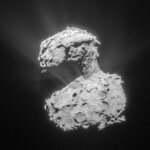
ESA’s Rosetta spacecraft has made the first measurement of molecular nitrogen at a comet, Comet 67P/Churyumov–Gerasimenko, providing clues about the temperature environment in which it formed.
The in situ detection of molecular nitrogen has long been sought at a comet. Nitrogen had only previously been detected bound up in other compounds, including hydrogen cyanide and ammonia, for example. Its detection is interesting since molecular nitrogen is thought to have been the most common type of nitrogen available when the Solar System was forming. In the colder outer…

A new map of the Moon's strangest volcano show that its explosive eruption spread debris over an area in
the Compton-Belkovich Volcanic Complex
much greater than previously thought.
By mapping the radioactive element thorium which spewed out during the eruption, they discovered that, with the help of the Moon's low gravity, debris from the unnamed volcano was able to cover an area the size of Scotland, or around 70,000 km2. The eruption, which happened 3.5 billion years ago, threw rock five times further than the pyroclastic flow of molten rock and hot gases that buried the Roman city of…
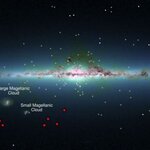
When we think of cosmology, we often imagine the largest telescopes peering into the deepest space, collecting the feeble light from exploding stars or the first galaxies.
But for some cosmologists – like the Galactic Archaeologists – the focus is the local universe, asking if we can learn about the evolution of our own Milky Way from what we see around us.
While this local universe is, well, local, how little we know about it can come as quite a surprise; we simply haven’t scanned the immensity of the entire sky in enough detail to reveal its secrets. But new surveys with new telescopes are…
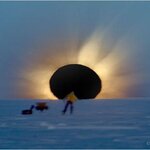
In the morning of March 20th Europeans will be treated with the amazing show of a total solar eclipse. The path of totality is unfortunately confined to the northern Atlantic ocean, and will miss Iceland and England, passing only over the Faroer islands - no wonder there's no hotel room available there since last September! Curiously, the totality will end on the north pole, which on March 20th has the sun exactly at the horizon. Hence the conditions for a great shot like the one below are perfect - I only hope somebody will be at the north pole with a camera...
(Image credit: Fred Bruenjes…
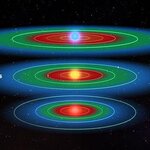
Astronomers have discovered thousands of exoplanets in our Milky Way galaxy using the Kepler satellite and many of them have multiple planets orbiting the host star.
By analyzing these planetary systems, researchers from the Australian National University and the Niels Bohr Institute in Copenhagen have calculated the probability for the number of stars in the Milky Way that might have planets in the habitable zone.
The calculations show that billions of the stars in the Milky Way will have one to three planets in the habitable zone, where there is the potential for liquid water and where…
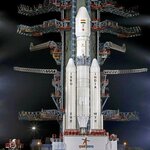
The Indian Space Research Organisation (ISRO) has successfully conducted a test on Saturday Mar. 14th to check the GSLV Mk III launch vehicle’s indigenous cryogenic CE-20 engine at ISRO Propulsion Complex (IPRC) in Mahendragiri, Tirunelveli district.
“It is yet another milestone achievement on the road map of developing a bigger and more powerful indigenously built high thrust cryogenic upper stage for GSLV Mk III rocket for the Indian Space Program,” said IPRC Director D. Karthikesan. IPRC is called the "Jet Propulsion Laboratory of India" as all stage and engine related tests of ISRO's…
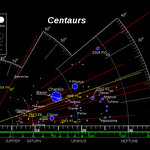
When most people think of cosmic rings, they think of Saturn, but there are actually five bodies in our solar system known to have them. Rings of gas and dust also encircle Jupiter, Uranus, and Neptune along with a "centaur", Chariklo, an homage to the mythological Greek creature which was a hybrid of man and beast to note the unclear dual nature of small, rocky bodies that possess qualities of both asteroids and comets.
Chariklo’s ring system was recently detected and now it may be joined by a possible ring system around a second centaur, Chiron, which was the first planetary body to be…
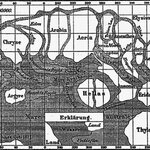
I’ve probably lost count of the number of ‘WATER ON MARS’ and related headlines I’ve read over the years. It’s an interesting case study of how a scientific theory gains support as more evidence is collected, until it becomes something ‘that is known’.
But last week we heard evidence that Mars has lost some water – an entire oceans worth in fact.
The history of ‘water on Mars’ is pretty interesting, if we start from the first time that Earth astronomers claimed to have seen features on our neighbour in the 19th century. Know as ‘Canali’ as they were first charted by and Italian astronomer…
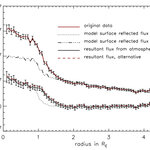
Ganymede, Jupiter's largest moon, is thought to have once had more water than all the water on Earth's surface.
But why?
Ganymede is the largest moon in our solar system and the only moon with its own magnetic field. The magnetic field causes aurorae, which are ribbons of glowing, hot electrified gas, in regions circling the north and south poles of the moon. Because Ganymede is close to Jupiter, it is also embedded in Jupiter's magnetic field. When Jupiter's magnetic field changes, the aurorae on Ganymede also change, "rocking" back and forth so by watching the rocking motion of the…

Researchers have detected about 20 rotating dust and gas discs in two clusters hosting exceptionally large and hot stars. The science mystery is how the rotating discs are able to withstand evaporation under such extreme conditions - if there is a Hell, this must certainly be it.
The center of the Milky Way is a nursery for young stars: In its heart, more young stars are born in dark clouds than in any other place in the Galaxy. These stars form in rich groups such as the 'Quintuplet' and 'Arches' clusters. Both star clusters are only a few million years old and contain stars as massive…